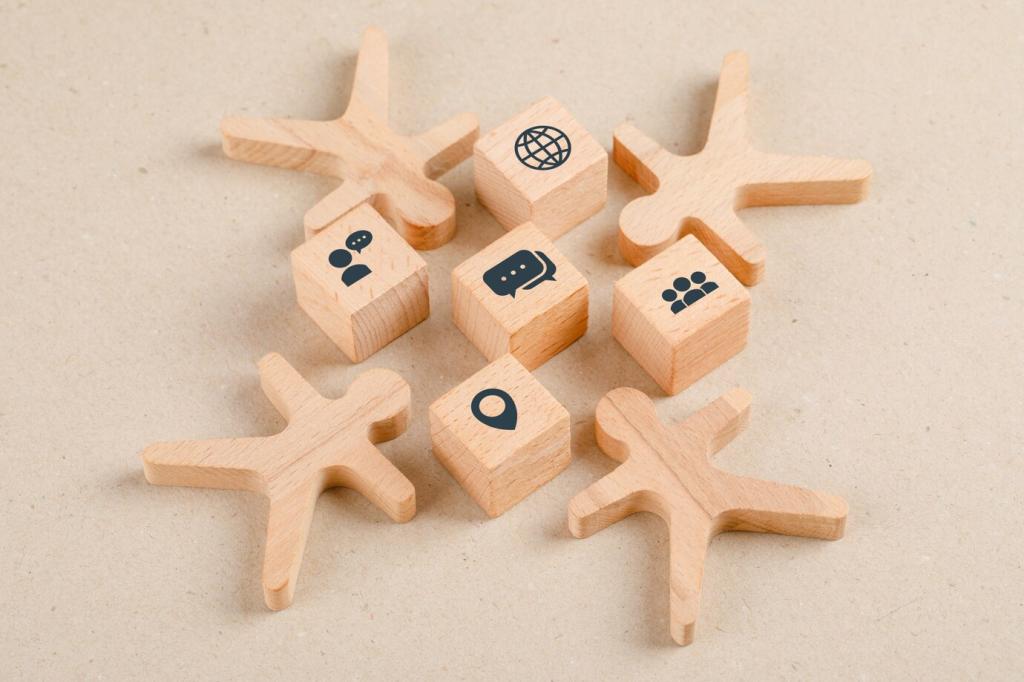Design Calm: Smart Furnishing for Visual Cohesion
Today’s chosen theme: Smart Furnishing for Visual Cohesion. Welcome to a space where every piece of furniture works together like a well-rehearsed ensemble—calm, intentional, and incredibly livable. Read on, comment with your design challenges, and subscribe for weekly ideas that turn visual clutter into effortless harmony.


Begin with a Cohesive Vision
Choose a primary neutral, a supportive mid-tone, and a single accent that echoes across spaces. Let a dining chair fabric reappear as a throw pillow, and repeat a wood tone in frames. Consistent color pathways guide the eye smoothly, making small homes feel larger and busy rooms feel composed.
Begin with a Cohesive Vision
Cohesion suffers when pieces fight for dominance. Pair a generous sofa with lighter-leg side tables, or balance a slim console with a substantial mirror. Allow comfortable negative space around anchors, aiming for walkways that feel intuitive. When scale sings in harmony, your furnishings look curated rather than crammed.
Smart Furniture That Serves the Story
Modular sofas and agile seating
A modular sofa shifts from movie lounge to conversation circle by reconfiguring chaises and corner units. Choose low profiles to keep sightlines open, and slipcovers in a repeated palette for continuity. Add light occasional stools that float between zones, keeping the social energy flexible without breaking the room’s visual flow.
Storage that vanishes in plain sight
Opt for flush-front cabinetry with integrated pulls and toe-kick drawers to banish visual noise. A tall cabinet that matches the wall color virtually disappears, while interior organizers eliminate rummaging. Hidden charging trays tame device clutter, maintaining a calm look that supports the larger cohesive narrative you’re building.
Transformer tables and hybrid heroes
Extendable dining tables, nesting side tables, and lift-top coffee tables stretch function without adding bulk. A wall bed with a continuous oak veneer can read as a panel, revealing a guest suite only when needed. These smart shapeshifters uphold cohesion by reducing object count while multiplying possibilities.
Layout, Flow, and Sightlines
Anchors that hold the gaze
Start layouts with one clear anchor: a fireplace, a large artwork, or a rug defining the main zone. Orient the primary seating to that point, then layer secondary pieces around it. When the anchor is undeniable, smaller elements fall into place, and the room feels instantly legible.
Circulation lanes that feel effortless
Maintain consistent walkways around primary seating—ideally wide enough for two people to pass casually. Avoid awkward pinch points near door swings, and float furniture off walls where possible. Gentle curves in traffic paths feel natural and prevent furniture from looking like barricades slicing your home into disjointed parts.
Zoning without building walls
Use rugs, ceiling-height lamps, and backless shelving to signal zones while preserving openness. Vary furniture heights intentionally: lower seating near windows, taller pieces against solid walls. When zones are distinct yet visually connected, the entire space reads as one cohesive chapter book, not unrelated short stories.
Materials, Textures, and Finishes
Mix woods without chaos
Unify by undertone first—warm with warm, cool with cool—then vary grain and depth. If your floors are honey oak, echo warmth in a walnut coffee table and balance with a paler beech accent. Repeat each wood at least twice so nothing feels accidental, and your mix reads deliberate.
Metal finishes that cooperate
Limit metals to two families per room, then repeat them with intention: brass hardware echoed in lamp bases, blackened steel reappearing on a bookshelf frame. A third metal can cameo in a small decorative piece, but keep it subtle. Consistent metals act like punctuation, clarifying your visual sentences.
Textiles as cohesion glue
Use textiles to bridge disparate elements. A woven wool rug can connect a leather sofa and linen chairs by matching undertones. Repeat textures across rooms—bouclé on a bench, echoed on a throw. Consistent textile choices soften edges and quiet competing surfaces, making the whole home feel thoughtfully stitched.

Light, Tech, and Hidden Helpers
Build ambient, task, and accent layers, then program scenes for daily rhythms—Wake, Work, Wind Down. Keep color temperature consistent within each scene to avoid visual dissonance. Smart dimmers and warm-dim bulbs transition from bright clarity to evening coziness, helping materials and colors read consistently throughout the day.


Light, Tech, and Hidden Helpers
Route wires through furniture grommets, baseboard raceways, and under-rug channels. Choose power strips with right-angle plugs and label them discreetly. A small charging drawer near the entry captures devices before they reach the sofa. When technology recedes visually, furnishings regain their role as the graceful connective tissue of the room.
A Mini Case Study: From Busy to Balanced
A 38-square-meter studio felt choppy: four table styles, cables everywhere, and a sofa blocking the window. The resident loved books, cooking, and game nights, but every passion had spawned a new mismatched piece, turning the home into a visual patchwork that never fully rested.

A Mini Case Study: From Busy to Balanced
We selected a two-module sofa to preserve window sightlines, a wall-mounted drop-leaf table to flex from work to dining, and a low media unit matching wall color. Repeated oak tones, blackened steel accents, and a limited textile palette connected zones. Smart scenes shifted from Focus to Supper to Slow Evenings.
